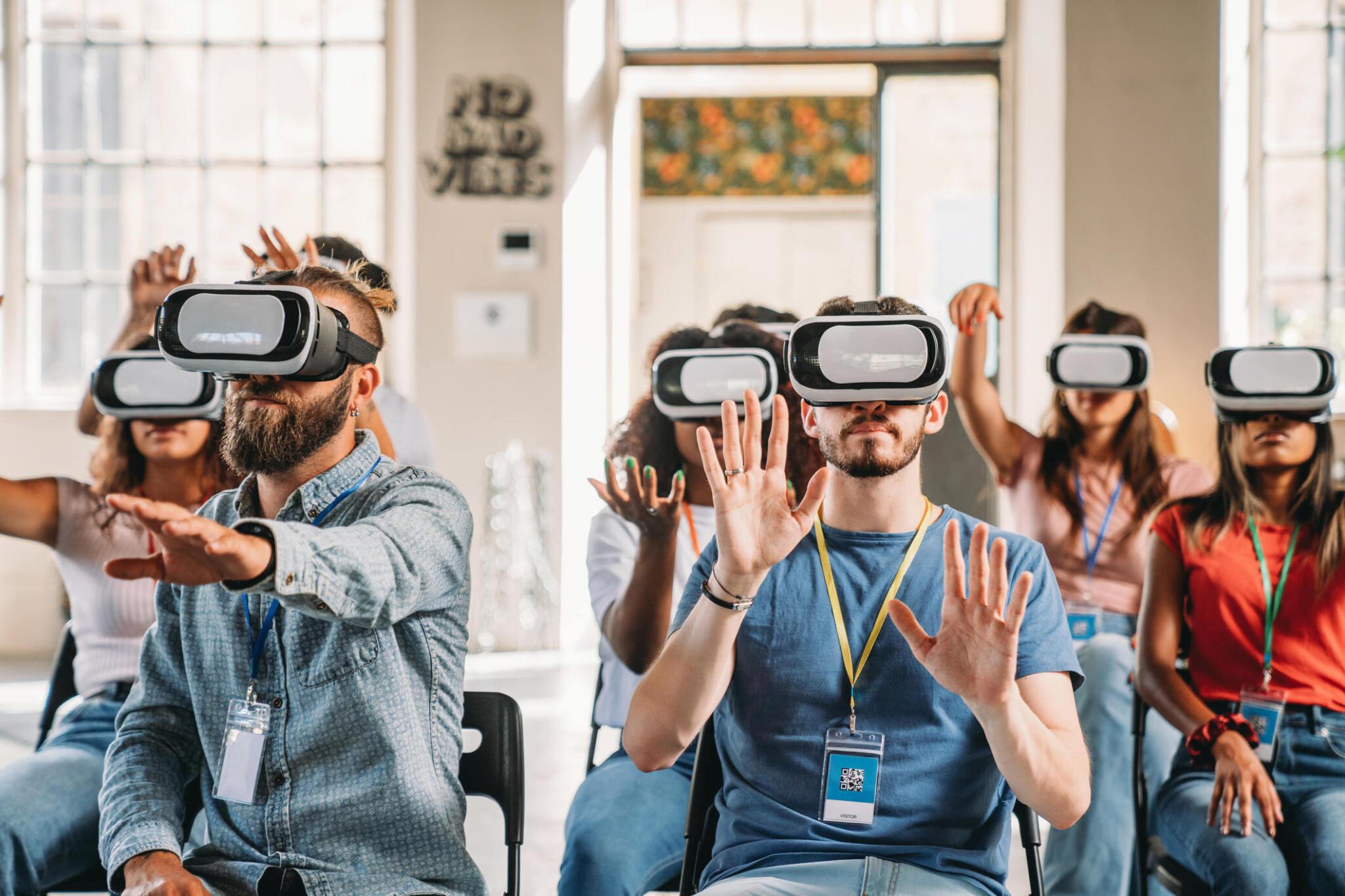Introduction:
Virtual Reality (VR) technology has revolutionized the way we approach training and skill development across various industries. By immersing learners in realistic and interactive environments, VR training offers unparalleled benefits in enhancing skill acquisition and performance. Let’s explore how VR training is transforming education and professional development in diverse fields.
Immersive Learning Environments:
VR training creates immersive and lifelike environments that simulate real-world scenarios, allowing learners to engage with complex concepts and situations in a controlled setting.
Example: In healthcare, medical students can practice surgical procedures in a virtual operating room, gaining hands-on experience without the need for cadavers or live patients.
In manufacturing, employees can undergo training in a virtual factory environment, where they learn to operate machinery and adhere to safety protocols in a risk-free setting.
Enhanced Engagement and Retention:
The interactive nature of VR training captivates learners’ attention and promotes active engagement, leading to increased retention of information and skills.
Example: Employees undergoing safety training in manufacturing industries can experience hazardous situations firsthand in a virtual environment, reinforcing safety protocols and procedures.
In education, students studying history can explore virtual historical sites and artifacts, making the learning experience more immersive and memorable.
Personalized Learning Experiences:
VR training programs can be tailored to accommodate individual learning styles and preferences, allowing learners to progress at their own pace and focus on areas that require improvement.
Example: Language learners can immerse themselves in virtual environments where they interact with native speakers, practicing conversational skills and cultural nuances in a personalized setting.
In corporate training, employees can participate in scenario-based simulations that address specific job roles and responsibilities, providing targeted learning experiences.
Cost-Effective Training Solutions:
VR training eliminates the need for expensive equipment, facilities, and travel expenses associated with traditional training methods, resulting in significant cost savings for organizations.
Example: Aviation companies can use VR simulations to train pilots in cockpit procedures and emergency protocols, reducing the reliance on costly flight simulators.
Similarly, healthcare facilities can implement VR training programs for medical staff to practice patient care procedures, reducing the need for expensive medical equipment and resources.

Risk-Free Learning Experiences:
VR training provides a safe and controlled environment for learners to practice high-risk tasks and scenarios without the fear of real-world consequences, minimizing the potential for injury or damage.
Example: Military personnel can undergo combat training in virtual battlefields, honing tactical skills and decision-making abilities in a risk-free environment.
Emergency responders can train for disaster scenarios, such as earthquakes or terrorist attacks, in virtual simulations that replicate real-world challenges and constraints.
Real-Time Performance Assessment:
VR training platforms offer real-time performance feedback and analytics, allowing trainers to assess learners’ progress and identify areas for improvement more effectively.
Example: Sales professionals can participate in virtual role-playing scenarios where their interactions with virtual customers are analyzed for communication skills and sales techniques.
Similarly, medical students can receive immediate feedback on their surgical techniques and decision-making skills during virtual procedures, enabling continuous improvement and refinement.
Accessibility and Flexibility:
VR training can be accessed remotely from anywhere with an internet connection, providing flexibility for learners to engage in training activities at their convenience.
Example: Remote employees can participate in virtual team-building exercises and collaborative projects, fostering communication and cohesion within distributed teams.
Students in remote or underserved areas can access high-quality educational content through VR training programs, leveling the playing field and expanding access to learning opportunities.
Transferable Skills Across Industries:
The skills and competencies acquired through VR training are transferable across various industries and sectors, allowing individuals to apply their knowledge and experience in diverse contexts.
Example: Customer service representatives trained in virtual environments can apply their communication and problem-solving skills in retail, hospitality, healthcare, and other service-oriented industries.
Similarly, engineering students who undergo VR training in design and prototyping can apply their skills in automotive, aerospace, and architectural industries, among others.
Conclusion:
Virtual Reality training is revolutionizing education and professional development by offering immersive, engaging, and cost-effective learning experiences. From healthcare and manufacturing to aviation and entertainment, VR training is enhancing skill acquisition, performance, and safety across various industries. By harnessing the power of VR technology, organizations can unlock new possibilities in training and development, empowering learners to achieve their full potential in today’s dynamic and competitive workforce.

